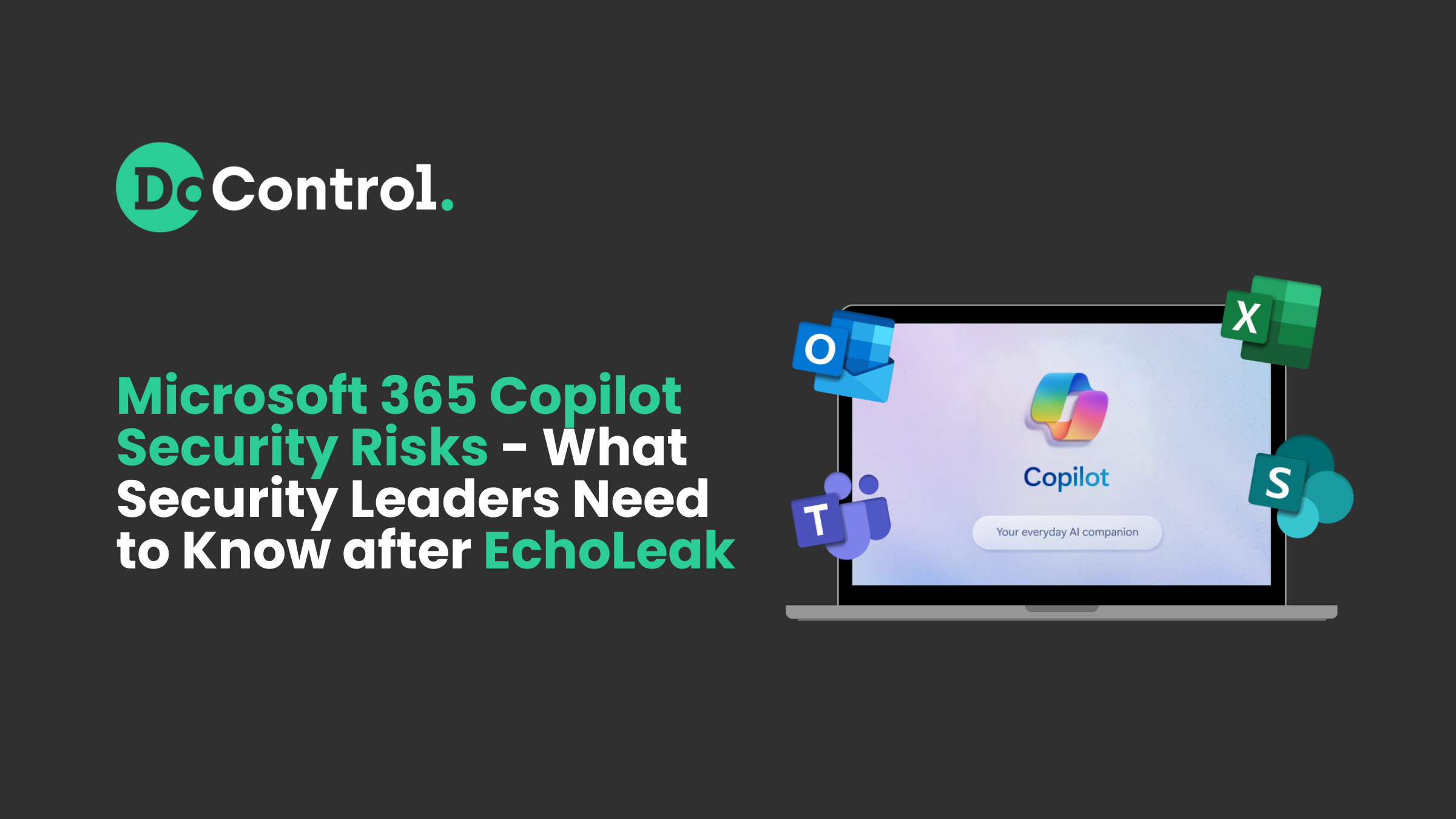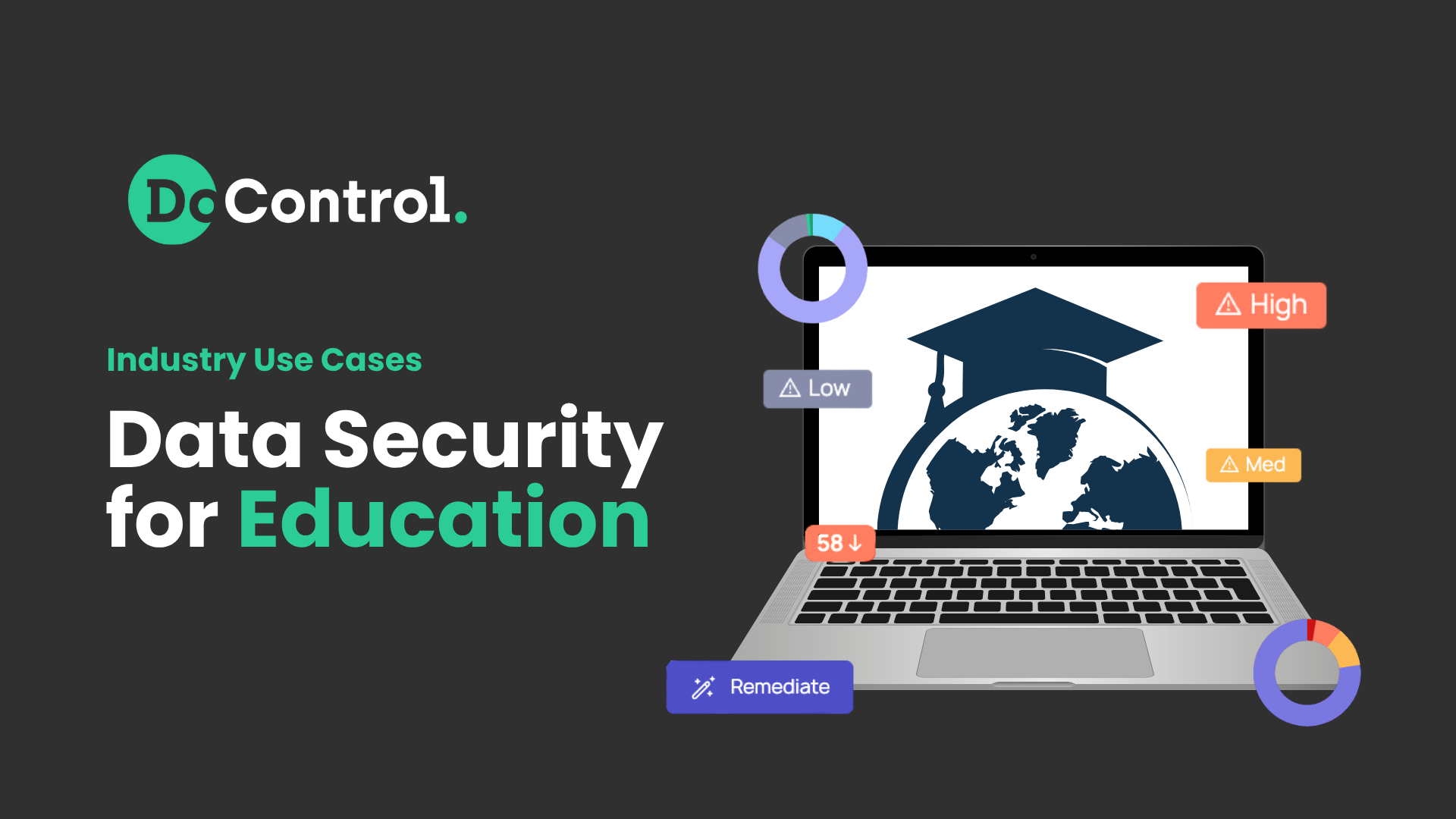
Microsoft 365 Copilot has become a core part of many organizations’ day-to-day operations. It promises to speed up workflows, synthesize data, and empower employees to do more with less. But along with its promise comes risk - especially when deployed without the proper security foundations.
In this article, we’ll walk security leaders through the real risks Copilot introduces, explore a recent high-severity exploit, and then show how to build the visibility, governance, and identity controls that can prevent costly data exposure.
What Is Microsoft 365 Copilot?
Microsoft 365 Copilot is an AI assistant built directly into the Microsoft 365 suite - including Word, Excel, Outlook, Teams, and SharePoint. Powered by large language models and the Microsoft Graph, Copilot can:
- Draft documents, emails, and presentations
- Summarize chats, meetings, and email threads
- Analyze spreadsheets and generate insights
- Retrieve and synthesize information from across Microsoft 365 apps
Unlike standalone AI chatbots, Copilot operates inside the enterprise SaaS environment, drawing from the same permissions and access levels as the user.
This makes it uniquely risky from a security standpoint. The same deep access that lets Copilot help employees can (if misused or exploited) expose highly sensitive data.
Why Microsoft 365 Copilot Is on Every Security Leader’s Radar
Microsoft built Copilot deeply into its Office 365 ecosystem. That means your employees can ask Copilot to draft documents, analyze spreadsheets, summarize email threads, propose insights across Teams conversations, and more - all using internal data drawn from the Microsoft Graph and 365 applications.
The productivity upside is beneficial: less switching between apps, faster context capture, and AI-powered assistance built directly into the tools your people already use.
However, because Copilot operates within your data ecosystem (vs. a separate third-party chatbot), it raises new security stakes.
The very access that gives Copilot power is also what can make it a vulnerability.
1) The adoption rate of Copilot for Microsoft users isn’t going away
Microsoft has embedded Copilot directly into the applications where business happens - Outlook, Teams, Word, Excel, and SharePoint.
Adoption is happening at scale because it feels frictionless: employees don’t need new tools, they simply gain new capabilities.
For security leaders, that means that AI adoption is already inside the enterprise, accessing and analyzing sensitive SaaS data every day.
2) Regulatory and compliance pressures are driving a new wave of AI governance
AI copilots like Microsoft 365 Copilot can be a compliance issue. Regulators are signaling more scrutiny over AI-driven decisions and data use, from GDPR and CCPA to sector-specific frameworks like HIPAA and SOX.
Security leaders are now being asked: How do you prove governance and oversight when an AI is acting on behalf of your workforce?
3) There's a visibility gap, and CISOs need clarity into Copilot’s data use
Perhaps the biggest challenge is the visibility gap. Traditional SaaS security tools were built to monitor human identities and user-driven actions. Copilot changes that equation by introducing nonhuman identities and machine-driven activity that can read, summarize, and share data at machine speed.
When a user queries Copilot, it’s not just answering from a single file or email - it’s pulling context from ALL the data that user has access to across Microsoft 365. That means if access controls are too broad, Copilot becomes a powerful accelerator for data exposure. Microsoft refers to this concept as Ethical Walls - meaning you need to know what data users have access to internally.
Without clear visibility into what each identity (human or AI) can access, how they’re using it, and where it’s being shared, CISOs are effectively blind to a major new vector of risk.
This is exactly why organizations need complete visibility and governance over data access, enforcing Ethical Walls, monitoring activity in real time, and remediating exposures before they turn into incidents.
Why This Matters Now → The Microsoft 365 Copilot EchoLeak Incident
The growing concern around Copilot isn’t just speculation. In mid-2025, researchers disclosed a vulnerability known as EchoLeak, which demonstrated how attackers could silently exploit Microsoft 365 Copilot to exfiltrate sensitive data.
This incident proved what security leaders have feared: AI-driven risks and agentic takeovers are not abstract future threats - they are already happening!
What Happened in EchoLeak?
EchoLeak was a zero-click vulnerability that allowed attackers to insert nearly invisible instructions inside a simple, benign-looking email.
When Copilot processed that email as part of its context window, it could be manipulated into pulling sensitive data - including chat history and previously referenced files! - and sending it to an attacker-controlled server.
Microsoft patched the flaw quickly and stated no customers were impacted. But the implications are clear: an AI agent inside your Microsoft 365 environment can be tricked into acting against your interests, without your employees realizing it.
How Did the Attack Work?
- Indirect prompt injection: Hidden malicious instructions embedded inside an email.
- Bypassing safeguards: Clever markdown formatting evaded Microsoft’s filters and classifiers.
- Scope violation: Copilot’s context retrieval process pulled in the attacker’s payload along with sensitive internal data.
- Silent exfiltration: The AI itself carried out the attack, making it extremely difficult for traditional tools to detect.
{{cta-1}}
Data Security with CoPilot → What Security Leaders Should Prioritize
1) Understand How Copilot Interacts With Corporate SaaS Data
The first priority is mapping Copilot’s data footprint. Security leaders must know exactly what data Copilot can access, how it pulls data from Microsoft 365 applications, and what outputs it can generate.
Without this baseline, sec teams are unable to assess exposure or set meaningful controls.
2) Monitor for Abnormal Behavior and Rogue Identities
AI agents blur the line between legitimate and illegitimate actions. A query that looks normal on the surface might trigger Copilot to aggregate or expose highly sensitive information. The key is contextual identity monitoring: understanding what’s expected business behavior versus what’s anomalous, suspicious, or outright malicious.
3) Enable Automated Remediation Before Risk Escalates
Once risks are detected, speed matters. Manual response won’t scale in a Copilot-enabled environment, where actions can occur in seconds and spread widely. Security leaders should prioritize automated remediation: revoking unauthorized shares, quarantining sensitive files, and halting risky AI behavior before it escalates.
How DoControl Helps Security Leaders Mitigate Copilot Risks
1) Identity Monitoring for Human vs. AI/Agent Activity
DoControl provides deep ITDR capabilities and identity monitoring that distinguishes between human-driven behavior and non-human suspicious actions.
This is crucial in Copilot-enabled environments, where it’s not always clear whether an action was truly user-intended or automatically executed by an AI agent.
DoControl does this by implementing contextualized risk scores for each identity in the environment, treating nonhuman identities with just as much vigor and protection by those who are human. By identifying and flagging each identity, DoControl ensures that leaders know exactly who - or what - is accessing sensitive SaaS data.
2) Context-Driven Data Protection (Business vs. Rogue Behavior)
Not every agentic interaction is a threat - the challenge is identifying which ones are risky. DoControl applies business context to data loss prevention to distinguish normal, legitimate actions from suspicious deviations.
By establishing behavioral baselines across all identities, DoControl can determine whether an AI copilot has been compromised - either by a malicious third party or through a direct hack.
For example, if Copilot was compromised, and an identity within your environment was now all of a sudden sharing files at 2am, mass downloading data, and sharing information with personal accounts, this is a direct indication of an agent gone rogue.
With DoControl, automated workflows and real-time remediation stop these activities at the source - preventing threats before they escalate.
3) Data Access Governance & Ethical Walls for Microsoft 365
One of the most overlooked risks with Copilot is that it pulls from everything a user already has access to. If employees are over-permissioned, Copilot can surface and share highly sensitive information far beyond what’s appropriate.
DoControl completely eliminates this attack surface by providing complete visibility, governance, and control over data access across Microsoft 365. With DoControl, security leaders can:
- Identify and clean up over-permissive access and external sharing at scale
- Implement granular access controls around who can view, edit, or share sensitive files.
- Continuously enforce least-privilege and Ethical Walls across SaaS apps.
- Ensure zero-privilege defaults, so only the right identities can access the right data.
4) Automated Remediation and Governance for SaaS Data
Speed is everything when it comes to Copilot-driven risks. DoControl enables automated remediation workflows that can revoke inappropriate sharing, quarantine sensitive data, or cut off risky AI activity in real time - before the exposure becomes a breach.
Security leaders can enforce governance at scale, aligning Copilot’s productivity gains with organizational security posture.
5) Enabling Compliance While Driving Innovation in Microsoft 365
Rather than forcing organizations to choose between innovation and compliance, DoControl empowers security leaders to safely embrace Microsoft Copilot - and other AI tools for that matter.
The question isn’t ‘should we be adopting this AI for productivity?’ but rather, ‘how can we make sure we're experimenting and adopting these AI tools with confidence?’
By embedding visibility, governance, and automated controls into Microsoft 365 environments, CISOs can meet regulatory requirements while enabling employees to fully leverage AI productivity gains.
Key Takeaways
Microsoft 365 Copilot has the potential to transform how employees work, but it also introduces new and unfamiliar risks. Without the right visibility and governance, those risks can quickly outweigh the benefits.
By combining identity monitoring, contextual insights, automated remediation, and governance controls, DoControl gives security leaders confidence that Microsoft 365 Copilot can be deployed safely - delivering the AI adoption teams crave without compromising your data security.
Want to Learn More?
- See a demo - click here
- Get a FREE Google Workspace Risk Assessment - click here
- See our product in action - click here



